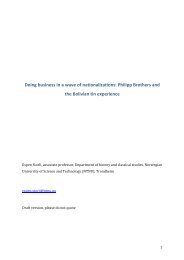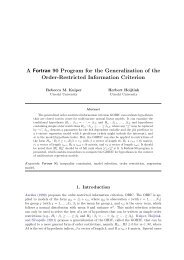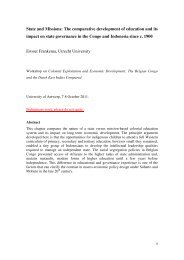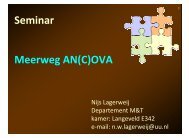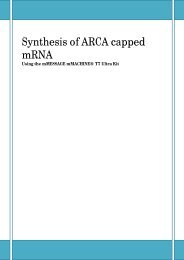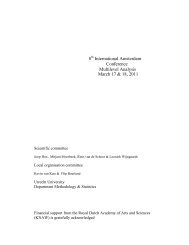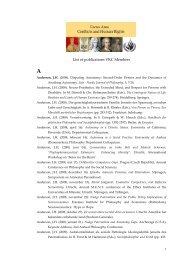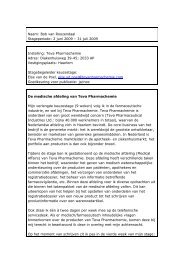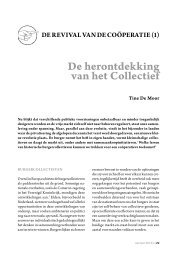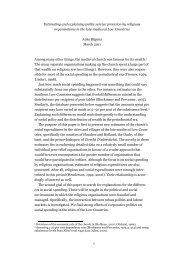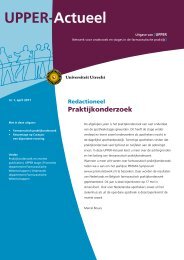New Approaches to Medieval Communication?1
New Approaches to Medieval Communication?1
New Approaches to Medieval Communication?1
You also want an ePaper? Increase the reach of your titles
YUMPU automatically turns print PDFs into web optimized ePapers that Google loves.
<strong>New</strong> <strong>Approaches</strong> <strong>to</strong> <strong>Medieval</strong> <strong>Communication</strong>?35literacy has been taken in<strong>to</strong> account. 115 Another very promising recent developmentis the shift in attention from juridical texts <strong>to</strong> the settlement of disputes.The Settlement of Disputes in Early <strong>Medieval</strong> Europe, edited by Wendy Daviesand Paul Fouracre in 1986, 116 stresses the function of documents among thoseof other forms of communication. Thus, the relative importance of the writtenword in medieval judicial practice can be ascertained. 117Ritual and its juxtaposition of non-verbal, oral and written forms of communicationseems the most recent addition <strong>to</strong> the study of medieval communication.As in dispute settlement, so in other ‘public’ rituals the role of thewritten word can be shown <strong>to</strong> have been less important than earlier concentrationon the extant written sources seemed <strong>to</strong> suggest. 118 Consultation, demonstrationand stage setting of emotions show, according <strong>to</strong> Gerd Althoff’s recentanalysis, <strong>to</strong> have been more important than writing in the medieval politicalgame. 119 Similarly, the participation of the aris<strong>to</strong>cracy in the medieval liturgy,studied in 1995 by Horst Wenzel, shows the written word <strong>to</strong> have been onlyone form among many <strong>to</strong> represent the drama of Christianity. 120 Not only writtentexts, visual images, <strong>to</strong>o, have <strong>to</strong> be replaced in the context in which theywere seen in order <strong>to</strong> be fully unders<strong>to</strong>od. 121We have concentrated this short review on the first publications dealingwith specific aspects of medieval communication. As a consequence, certaintitles of major importance have not been mentioned. They can, however, easilybe traced in the bibliography. The aim has merely been <strong>to</strong> show when certainquestions were first put, in order <strong>to</strong> find out when certain approaches <strong>to</strong> medievalcommunication are first expressly attested.115 E.g. in the contribution of O. GUYOTJEANNIN, “ ‘Penuria scrip<strong>to</strong>rum’: Le mythe del’anarchie documentaire dans la France du Nord (X e -première moitié du XI e siècle)”, pp. 11-44,at pp. 13-14.116No. 1206 (ed. DAVIES and FOURACRE, 1986).117Cf. the contribution of Karl Heidecker <strong>to</strong> this volume (No. 1197).118See the contribution of Mariëlle Hageman <strong>to</strong> this volume (No. 487).119Nos. 476-479 (ALTHOFF, 1990, 1993, 1996 and 1997).120 No. 631 (WENZEL, 1995), pp. 95-127.121M. MOSTERT, “Qu’est-ce qu’une image? En guise de conclusion”, in: Les images dansles sociétés médiévales: Pour une his<strong>to</strong>ire comparée, ed. J.-M. SANSTERRE and J.-Cl. SCHMITT(Brussels and Rome, 1999: Bulletin de l’Institut Belge de Rome 69), pp. 265-271, at p. 267.



